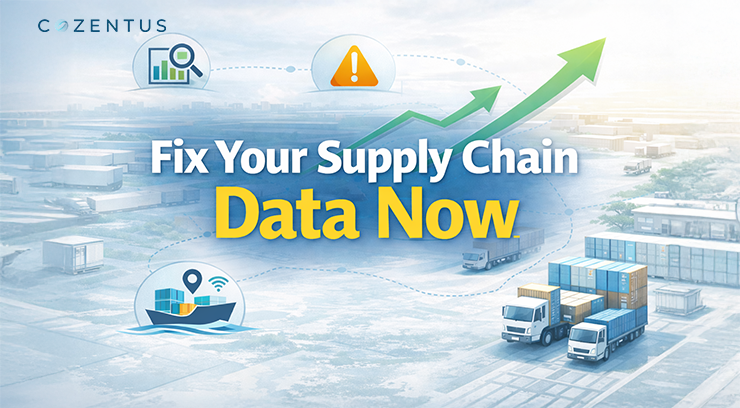The COVID-19 Pandemic has strained the global food and beverage supply chain to its breaking limit says a report. Since early spring, most nations have seen an unprecedented surge of hoarding by concerned customers, resulting in almost bare shop shelves. Shelter-at-home policies and the obligatory closure of non-essential companies have resulted in restaurant bankruptcies, poured milk down the drain, and fields of decaying vegetables earmarked for food service firms. Plant closures due to COVID-19 outbreaks and significant shortages of imported food supplies have exacerbated a strained F&B supply chain.
Directors/ Editor’s Note:
Food and beverage (F&B) sector participants are turning to innovative technology to fulfil our planet's rising need for sustainable production while dealing with supply chain interruptions. Advanced measuring methods are vital in moving the industry into the future, from product design and process optimisation to the requirement to assure consistency, safety, quality, and sustainability.
So, with consumer expenditure on food and non-alcoholic drinks remaining high, what changes might we anticipate after COVID-19?
The epidemic has hastened the adoption of many past patterns, changing priorities and preferences.
Consumer Trends
In one case, the pandemic increased consumer demand forecasting in supply chain management for plant-based meats because of a scarcity of animal-based items. We also saw an upsurge in home-cooked meals. The tools and materials needed to prepare home-cooked meals have seen an unexpected and significant growth in demand. Fear of catching the virus prompted a quick surge in direct-to-customer delivery.
It is believed that 40% of necessities are now purchased online. This level of e-Commerce commerce was not regular for most F&B enterprises before COVID, but it is expected during the epidemic. It may well be post-COVID as consumer patterns shift.
Traditional Forecasting's Role
Traditional product forecasting relies on statistical time series to provide projections based on past sales data. Unfortunately, when significant changes in demand occur over short periods, such as with the Coronavirus, the past is seldom a good predictor of the future, particularly when forecasting down to the SKU/location level.
Forward-looking data must be prioritised to perceive, respond, and adjust to what is occurring. Some food and beverage corporations have prioritised the development of demand-sensing capabilities. These expanded market-based demand forecasting in supply chain management & planning skills will benefit forward-thinking executives after COVID.
In demand sensing, demand information is translated with the slightest delay into insight into who is purchasing what items, what qualities drive sales, and how demand-shaping activities affect sales. Demand sensing augments a historical forecast with forward-looking data to increase forecast accuracy and synchronise and align buying, production, and deployment processes to what is occurring in the supply chain.
Daily sales order history, daily point of sale (POS), syndicated data, market intelligence, social media, location square footage, and foot traffic. Moreover, weather information can be used to improve product predictions based on demand-sensing. Demand sensing enables F&B firms to adapt promptly to micro-market developments, improving fill rates and reducing distressed goods.
The System Difficulty (and Solution)
Most food and beverage organisations have disjointed planning capabilities. Longer-term (strategic and financial) planning, mid-term (tactical and S&OP), and short-term operational (demand, inventory, buying, replenishment, and production) planning are not connected or synchronised.
Various organisations lead these disparate planning efforts, rely on different assumptions, are based on additional data, and are executed on disparate platforms. Financial plans are challenging to integrate into S&OP and operational procedures, and economic and S&OP plans often do not reflect the most recent supply chain operational data.
Disconnections and misalignments result in lost opportunities, increased expenses, and operational hazards.
What is the solution?
Some businesses have increased emphasis on advanced sales and operations planning, also known as Integrated Business Planning (IBP). IBP combines volumetric and financial data into a single flexible planning and decision-making process that spans operational, tactical, and strategic planning timeframes.
IBP promotes improved practices and tighter collaboration across planning teams by facilitating faster transitions between supply chain stakeholders. Everyone receives dependable responses more quickly, which is particularly crucial today.
Forecasting and demand planning in supply chain has become more precise and coordinated. Alerts indicate deviations from the plan, cooperation shortens process times, and confidence in the integrated plan grows.
COVID has presented a new focus for many F&B companies: invest in modern supply chain visibility solutions & capabilities that improve automation, agility, and resilience via workflow, advanced analytics, machine learning, and artificial intelligence for supply chain.
If the industry grows to accept substantially larger direct-to-consumer transaction volumes, regular supply chain processes must automate, and decision-making must accelerate. C-level executives in the food and beverage industry want their supply chain leaders to adapt their companies' operations for the digital age.
To achieve the required digital transformation, a new focus on advanced technology is needed, including
- Supply chain optimisation technologies such as inventory optimisation, supply optimisation, and finite scheduling.
- Supplier onboarding and management capabilities.
- Supply chain digital twins and real-time information to sense, analyse, and respond faster to demand forecasting in supply chain management and supply variations.
Solutions for Food Retail
Supply chain visibility solutions & innovations do not end once items reach grocery store shelves. Because excessive CO2 levels may induce unconsciousness and even death, many nations understand the need to use eco-friendly freezers in supermarkets.
CO2 is being used to replace synthetic refrigerants in all retail refrigeration in-store and in the back of the house. Consequently, precise and dependable monitoring is required to assure safety and the early identification of any leaks.
Using CO2 in retail refrigeration systems helps grocers and other food merchants reduce greenhouse gas emissions while also lowering operating expenses by detecting and eliminating potential refrigerant leaks using specialised humidity sensors.
Monitoring relative humidity in retail food shops is critical for safeguarding fruits and vegetables from moisture loss, rotting, and ageing while maintaining product quality. Understanding relative humidity, absolute humidity, wet-bulb temperature, enthalpy, water concentration, and other variables allows retail decision-makers to assess the impacts of changing ambient conditions and react appropriately.
Bottom Line
As the world tries to rebuild its food system and strengthen and diversify supply chains for production, processing, distribution, markets, and consumers, new solutions are being used at every level of the F&B supply chain to strengthen our food supply chain visibility solutions.
The data seems to support this viewpoint. The COVID-19 pandemic, on the other hand, has shown severe several supply chain gaps across all sectors of the F&B business—says Oxford Academic Research. Cozentus provide solutions tailored to your supply chain management ecosystem. We feel that the increased focus on the supply chain gives you a unique opportunity to advocate for essential reforms.
Are you prepared to lead the push for the future digital supply chain?
Recent Post
Subscribe to our newsletter
Stay updated on latest trends and news in the supply chain and logistics industry







